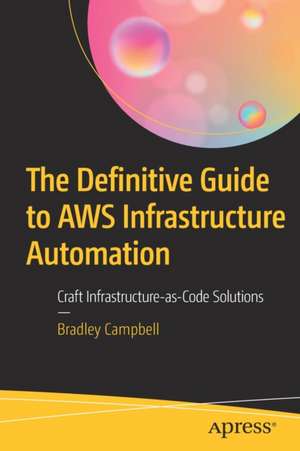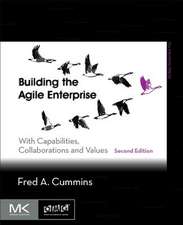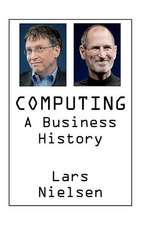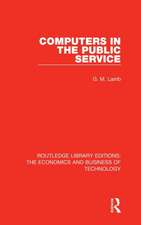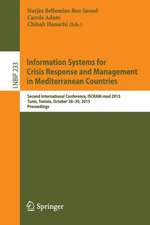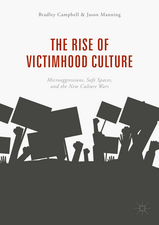The Definitive Guide to AWS Infrastructure Automation: Craft Infrastructure-as-Code Solutions
Autor Bradley Campbellen Limba Engleză Paperback – 7 dec 2019
Discover the pillars of AWS infrastructure automation, starting with API-driven infrastructure concepts and its immediate benefits such as increased agility, automation of the infrastructure life cycle, and flexibility in experimenting with new architectures. With this base established, the book discusses infrastructure-as-code concepts in a general form, establishing principled outcomes such as security and reproducibility. Inescapably, we delve into how these concepts enable and underpin the DevOps movement.
The Definitive Guide to AWS Infrastructure Automation begins by discussing services and tools that enable infrastructure-as-code solutions; first stop: AWS's CloudFormation service. You’ll then cover the ever-expanding ecosystem of tooling emerging in this space, including CloudFormation wrappers such as Troposphere and orchestrators such as Sceptre, to completely independent third-party tools such as Terraform and Pulumi. As a bonus, you’ll also work with AWS' newly-released CDK (Cloud Development Kit). You’ll then look at how to implement modular, robust, and extensible solutions across a few examples -- in the process building out each solution with several different tools to compare and contrast the strengths and weaknesses of each.
By the end of the journey, you will have gained a wide knowledge of both the AWS-provided and third-party ecosystem of infrastructure-as-code/provisioning tools, and the strengths and weaknesses of each. You’ll possess a mental framework for how to craft an infrastructure-as-code solution to solve future problems based on examples discussed throughout the book. You’ll also have a demonstrable understanding of the hands-on operation of each tool, situational appropriateness of each tool, and how to leverage the tool day to day.
What You Will Learn
DevOps engineers, cloud engineers and architects focused on the AWS ecosystem, software engineers/developers working within the AWS ecosystem, and engineering leaders looking for best practices.
The Definitive Guide to AWS Infrastructure Automation begins by discussing services and tools that enable infrastructure-as-code solutions; first stop: AWS's CloudFormation service. You’ll then cover the ever-expanding ecosystem of tooling emerging in this space, including CloudFormation wrappers such as Troposphere and orchestrators such as Sceptre, to completely independent third-party tools such as Terraform and Pulumi. As a bonus, you’ll also work with AWS' newly-released CDK (Cloud Development Kit). You’ll then look at how to implement modular, robust, and extensible solutions across a few examples -- in the process building out each solution with several different tools to compare and contrast the strengths and weaknesses of each.
By the end of the journey, you will have gained a wide knowledge of both the AWS-provided and third-party ecosystem of infrastructure-as-code/provisioning tools, and the strengths and weaknesses of each. You’ll possess a mental framework for how to craft an infrastructure-as-code solution to solve future problems based on examples discussed throughout the book. You’ll also have a demonstrable understanding of the hands-on operation of each tool, situational appropriateness of each tool, and how to leverage the tool day to day.
What You Will Learn
- Discover the technological and organizational benefits to infrastructure-as-code solutions
- Examine the overall landscape of infrastructure-as-code tooling and solutions available to consumers of AWS services
- See the strengths and weaknesses of these tools relative to one another as examined through hands-on implementation of several solutions
- Gain hands-on experience, best practices, and tips and tricks learned through several years’ real-world experience delivering solutions using these very tools in a wide variety of scenarios
- Engineer solid solutions that leave room for new requirements and changes without requiring needless refactoring
DevOps engineers, cloud engineers and architects focused on the AWS ecosystem, software engineers/developers working within the AWS ecosystem, and engineering leaders looking for best practices.
Preț: 307.04 lei
Preț vechi: 383.80 lei
-20% Nou
Puncte Express: 461
Preț estimativ în valută:
58.75€ • 61.62$ • 48.91£
58.75€ • 61.62$ • 48.91£
Carte disponibilă
Livrare economică 11-25 martie
Preluare comenzi: 021 569.72.76
Specificații
ISBN-13: 9781484253977
ISBN-10: 1484253973
Pagini: 353
Ilustrații: XIV, 353 p. 37 illus.
Dimensiuni: 155 x 235 x 18 mm
Greutate: 0.57 kg
Ediția:1st ed.
Editura: Apress
Colecția Apress
Locul publicării:Berkeley, CA, United States
ISBN-10: 1484253973
Pagini: 353
Ilustrații: XIV, 353 p. 37 illus.
Dimensiuni: 155 x 235 x 18 mm
Greutate: 0.57 kg
Ediția:1st ed.
Editura: Apress
Colecția Apress
Locul publicării:Berkeley, CA, United States
Cuprins
Chapter 1: Intro (completed).- Chapter 2: Current Landscape (completed).- Chapter 3: CloudFormation In-Depth (completed).- Chapter 4: Tools That Leverage CloudFormation.- Chapter 5: Terraform In-Depth.- Chapter 6: Pulumi and the AWS CDK.- Chapter 7: Building a 3-Tier App and Networking Layout with Multiple Tools.- Chapter 8: Conclusion.
Notă biografică
Bradley Campbell currently consults as a principal cloud architect at Cloudreach. He has experience in software engineering, DevOps, cloud architecture, and data engineering and architecture across a variety of verticals, mostly focused in finance. Bradley holds all relevant AWS certifications and two Google Cloud certifications, and is a Jenkins Certified Engineer. His programming background is primarily centered around Python, Perl, Go, and JavaScript, although he is always keen on exploring new languages and skills to add to his toolbox.
Textul de pe ultima copertă
Discover the pillars of AWS infrastructure automation, starting with API-driven infrastructure concepts and its immediate benefits such as increased agility, automation of the infrastructure life cycle, and flexibility in experimenting with new architectures. With this base established, the book discusses infrastructure-as-code concepts in a general form, establishing principled outcomes such as security and reproducibility. Inescapably, we delve into how these concepts enable and underpin the DevOps movement.
The Definitive Guide to AWS Infrastructure Automation begins by discussing services and tools that enable infrastructure-as-code solutions; first stop: AWS's CloudFormation service. You’ll then cover the ever-expanding ecosystem of tooling emerging in this space, including CloudFormation wrappers such as Troposphere and orchestrators such as Sceptre, to completely independent third-party tools such as Terraform and Pulumi. As a bonus, you’ll also work with AWS' newly-released CDK (Cloud Development Kit). You’ll then look at how to implement modular, robust, and extensible solutions across a few examples -- in the process building out each solution with several different tools to compare and contrast the strengths and weaknesses of each.
By the end of the journey, you will have gained a wide knowledge of both the AWS-provided and third-party ecosystem of infrastructure-as-code/provisioning tools, and the strengths and weaknesses of each. You’ll possess a mental framework for how to craft an infrastructure-as-code solution to solve future problems based on examples discussed throughout the book. You’ll also have a demonstrable understanding of the hands-on operation of each tool, situational appropriateness of each tool, and how to leverage the tool day to day.
You will:
The Definitive Guide to AWS Infrastructure Automation begins by discussing services and tools that enable infrastructure-as-code solutions; first stop: AWS's CloudFormation service. You’ll then cover the ever-expanding ecosystem of tooling emerging in this space, including CloudFormation wrappers such as Troposphere and orchestrators such as Sceptre, to completely independent third-party tools such as Terraform and Pulumi. As a bonus, you’ll also work with AWS' newly-released CDK (Cloud Development Kit). You’ll then look at how to implement modular, robust, and extensible solutions across a few examples -- in the process building out each solution with several different tools to compare and contrast the strengths and weaknesses of each.
By the end of the journey, you will have gained a wide knowledge of both the AWS-provided and third-party ecosystem of infrastructure-as-code/provisioning tools, and the strengths and weaknesses of each. You’ll possess a mental framework for how to craft an infrastructure-as-code solution to solve future problems based on examples discussed throughout the book. You’ll also have a demonstrable understanding of the hands-on operation of each tool, situational appropriateness of each tool, and how to leverage the tool day to day.
You will:
- Discover the technological and organizational benefits to infrastructure-as-code solutions
- Examine the overall landscape of infrastructure-as-code tooling and solutions available to consumers of AWS services
- See the strengths and weaknesses of these tools relative to one another as examined through hands-on implementation of several solutions
- Gain hands-on experience, best practices, and tips and tricks learned through several years’ real-world experience delivering solutions using these very tools in a wide variety of scenarios
- Engineer solid solutions that leave room for new requirements and changes without requiring needless refactoring
Caracteristici
Focuses on approach and technique versus simply focusing on tools The author is an experienced cloud architect with nine AWS certifications Covers sound software engineering concepts as applied to infrastructure-based/IaC solutions
